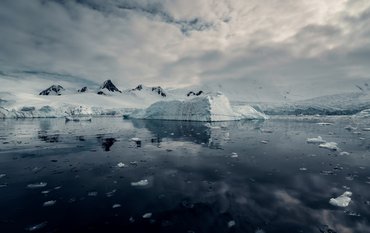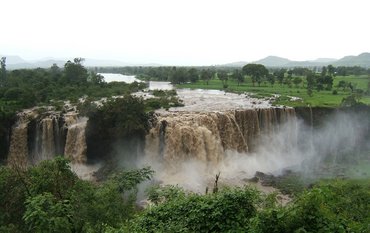The first gravity maps of the GRACE-FO mission are now available. The twin satellites of the GFZ German Research Centre for Geosciences and NASA continuously measure the Earth's gravitational field and thus carry on the successful GRACE mission. The acronym stands for Gravity Recovery And Climate Experiment. Groundbreaking results of the GRACE mission were, for example, observations of Greenland’s ice mass loss. Previously, the amount of melting could only be estimated. GRACE flew from 2002 to 2017, in May 2018 GRACE-Follow On was launched into orbit. After switching on and extensive testing of the instruments in space, GRACE-FO data on monthly changes in the gravity field are now available to the scientific community worldwide.
The GRACE and GRACE FO missions are a cooperation between the GFZ, the US space agency NASA, the Jet Propulson Laboratory (JPL) and the German Aerospace Center DLR. GRACE-FO also carries on board a laser ranging interferometer (LRI) whose optical design comes from the Albert Einstein Institute – Max Planck Institute for Gravitational Physics in Hanover and was built by SpaceTech GmbH on Lake Constance on behalf of the GFZ. The electronic components and the laser were provided by JPL. With the LRI, extremely precise distance measurements in the nanometer range are possible, which should help to detect gravitational waves, among other things, as the heart of a future space telescope.
Since the end of May 2018, the two GRACE-FO satellites have been orbiting the Earth at an altitude of around 490 km and a distance of 220 km from each other. From tiny changes in distance, which are often smaller than the diameter of a hair, conclusions can be drawn about the gravity field of the areas flown over. The movement of large masses leads to changes in the gravity field. The GRACE data, for example, show that more than 280 billion tons of water are discharged from Greenland into the sea every year. This ice melting causes the sea level to rise in addition to the thermal expansion of the oceans. How the trend will continue, whether the melting will slow down or accelerate, will only become apparent in the coming years. "In any case, we can see that we can continue the data series as hoped," says Frank Flechtner, principal investigator for GRACE-FO at GFZ.
The new data also clearly show the drought months of 2018. Central Europe and in particular Germany were affected by the drying up of soils. The consequences are still noticeable this year: Many forests in Germany are under drought stress and beetle calamities have infested forests. "The data from GRACE and GRACE-Follow On are extremely important for understanding the effects of climate change," says Reinhard Hüttl, Scientific Director and Chairman of the GFZ Executive Board. "This clearly demonstrates the importance of basic research and its rapid transfer to application," adds Hüttl. The idea of measuring the Earth's gravitational field by satellite was initially accompanied by doubts as to whether this was feasible at all. But the results of the GRACE mission showed the breadth of the applications: Groundwater exploitation in California can be monitored, as can flooding in the Amazon catchment area. A short-term slowdown in global sea-level rise could be attributed to devastating floods in Australia. There, gravity data showed, water was bound to land for several months after extreme rainfall before returning to the oceans.
"We are looking forward to receiving further data from GRACE-FO," says Frank Flechtner, "and we are already working on concepts to continue the measurement series with further satellite missions."
Scientific contact:
Dr. Eva Börgens
eva.boergens@gfz-potsdam.de
+49-331-288-1140
Media contact:
Josef Zens
josef.zens@gfz-potsdam.de
+49-331-288-1040
Background information:
<link en media-and-communication news details article satellite-mission-grace-follow-on>www.gfz-potsdam.de/en/media-and-communication/news/details/article/satellite-mission-grace-follow-on/
Post-editing (30.07.2019):
The image "Global sea level rise" was updated and additionally got a legend in the image.











![[Translate to English:] Both scientists sitting on stools in front of a wall of books in the Telegrafenberg library](/fileadmin/_processed_/6/6/csm_Buiter_Castell_DORA_4_e87cb1ea18.jpeg)
![[Translate to English:] Gruppenbild mit 4 Personen](/fileadmin/_processed_/8/d/csm_20241017_GFZ-Emmerman-Medal-005_web_reinhardtundsommer_21a414fa4a.jpeg)






![[Translate to English:] Ice landscape with five red tents](/fileadmin/_processed_/8/9/csm_Zeltlager_auf_dem_Eis_Urheberin_Jenine_McCutcheon_5ced2d523b.jpeg)














![[Translate to English:] Group photo with 7 people in front of a new metal plant in a large laboratory hall.](/fileadmin/_processed_/0/4/csm_20240628-GFZ_Einweihung_Triax-Anlage-PRESSE_Abb1_040_c-Bahlo-GFZ_187906cb48.jpeg)
